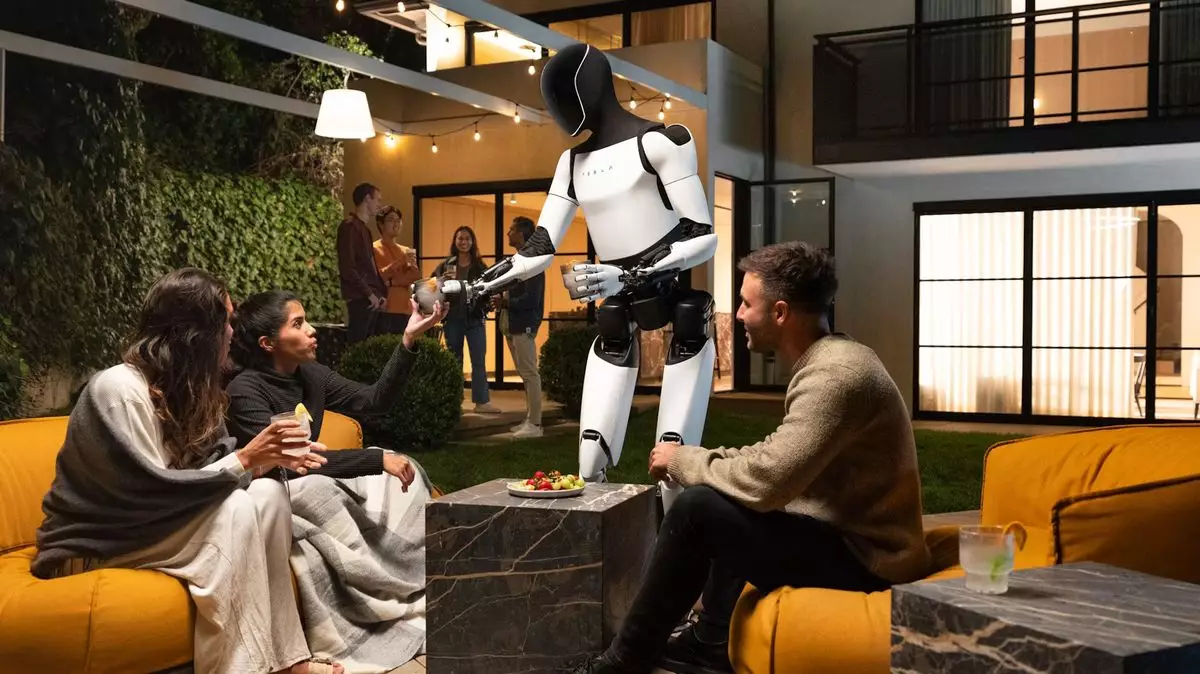In 2021, Elon Musk introduced the world to a humanoid robot concept that, upon first glance, appeared to be nothing more than an individual dressed in a costume. Fast forward to 2022, and we witness the debut of a prototype that, while not quite exuding the sophistication one might expect from cutting-edge robotics, did exhibit the ability to walk upright (albeit at a leisurely pace). It was deemed “kind of neat” at the time, primarily for its relatively stable mobility. However, the recent Tesla event dubbed “We, Robot,” has brought this discussion into the limelight once again, as Musk presented a fleet of these machines and made grandiose claims about their potential capabilities.
During the “We, Robot” event, Musk’s enthusiasm was palpable as he outlined the myriad roles the Optimus robot would supposedly fulfill. “It’ll be able to do anything you want,” he proclaimed. This statement raises several questions about the realistic expectations of such technology. From parenting assistance to grocery shopping, the vision Musk painted was one of an all-serving, friendly automaton that could seamlessly integrate itself into human life. His assertion that “this will be the biggest product ever” suggests a level of confidence that is not only ambitious but borders on the fantastical.
The prospect of a robot that could handle a multitude of daily tasks is alluring, capturing the imagination of not just tech enthusiasts but the general public as well. Musk’s comments imply that with a global population of eight billion, the demand for an “Optimus buddy” would be insatiable, painting an almost utopian picture of coexistence between humans and autonomous machines.
While Musk regaled the audience with visions of a future populated by industrial and domestic robots, it was not lost on observers that there were notable discrepancies in the presentation. A key moment occurred when an Optimus robot was observed serving drinks at a post-event gathering, yet reports suggest that these robots were not operating independently. According to sources such as Jalopnik, Tesla employees were allegedly controlling the robot’s movements, leading to speculation about the true autonomous capabilities of the Optimus prototype.
Musk’s decision to avoid explicitly stating whether the robots were powered by artificial intelligence or were autonomous raises eyebrows. Given his history of bold declarations, many have questioned whether Tesla is deliberately sowing the seeds of speculation to maintain a competitive edge or if it’s simply a case of cautious corporate messaging. The optics of showcasing robots engaging in natural interactions, while they are likely being remotely operated, could elicit skepticism, particularly from those familiar with the scope of current AI and robotic technology.
Musk’s ambitions echo sentiments found throughout the history of technological development—where dreams often outpace reality. While it is entirely plausible that we may eventually see more sophisticated humanoid robots perform everyday tasks, the timeline Musk projected may be overly optimistic. Historical patterns suggest that technology often undergoes significant hurdles before realizing its potential. This aligns with similar challenges faced by fully autonomous vehicles—a project that, despite ongoing advancements, still faces significant regulatory and technical barriers.
As we assess the future of humanoid robots, one must remain cautiously optimistic. The reality is that while the possibility exists for intelligent robots to become integrated into our lives, the immediate timeline provided by Musk raises more questions than answers. The expectations surrounding the Optimus project could lead to disillusionment if results fall short of the extravagant claims made.
While Musk’s vision for the future of humanoid robots is undoubtedly captivating and paints a hopeful scenario of human-machine collaboration, it is essential to temper our expectations. As history has shown, the path from prototype to practical application is fraught with challenges that must be navigated with care. The excitement surrounding Tesla’s advancements in robotics is justified, but as always with technology, grounding our expectations in reality is crucial for fostering genuine progress.


Leave a Reply